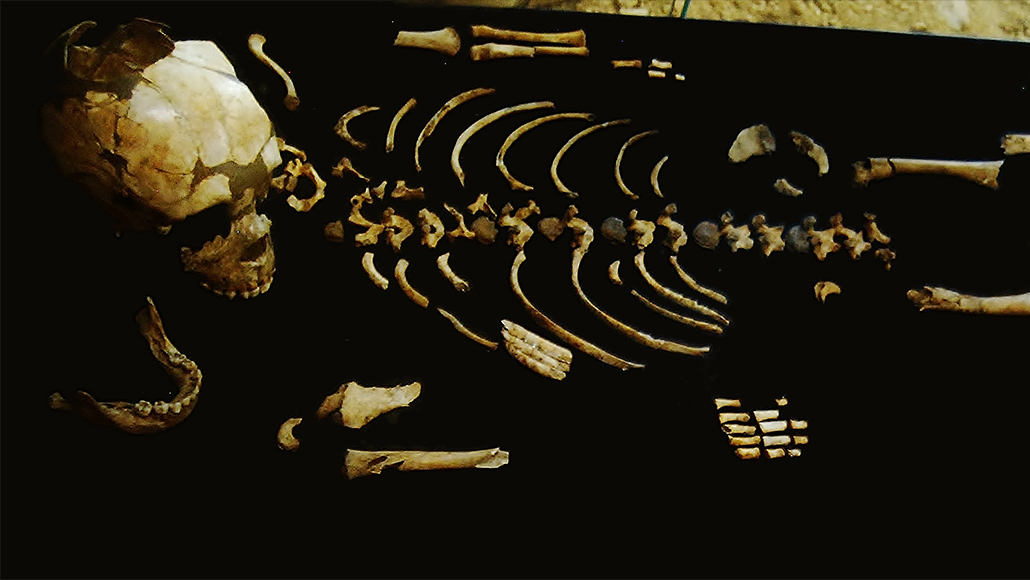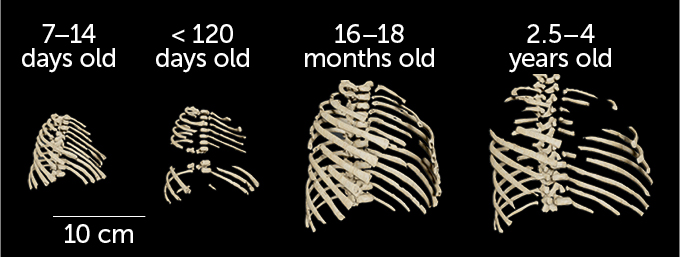Neandertal babies had stocky chests like their parents
Our evolutionary relatives may have inherited short, deep rib cages from their ancestors

Digital reconstructions indicate that Neandertal babies and young children, represented here by the partial skeleton of a roughly 2.5-year-old individual found in France in 1961, already had stocky chests typical of adult Neandertals.
Leo Fyllnet/Wikimedia Commons (CC BY-SA 3.0)









